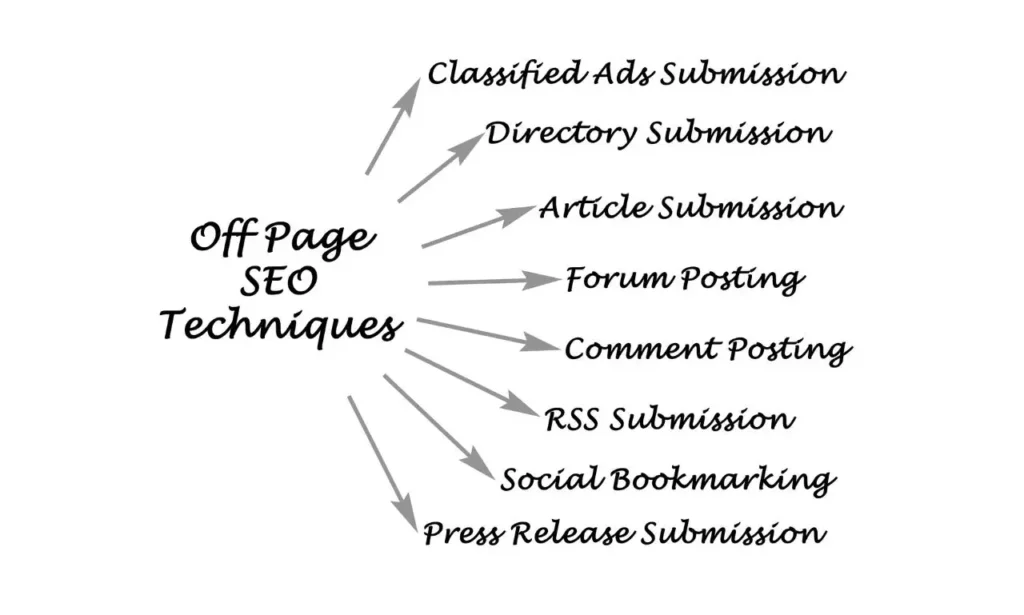Keyword research is a crucial part of a successful search engine optimization (SEO) strategy, helping identify the words and phrases your target audience uses to search for information, products, or services online. However, it’s not the end of the journey; what follows is what shapes your online presence and determines your website’s ranking in search engine results. So let’s explore what to do after keyword research.
This guide will explore the steps to take after keyword research, including analyzing competition, crafting compelling content, optimizing on-page elements, and adapting to emerging SEO trends like voice search and mobile optimization. This post-keyword research process is your roadmap to SEO success, ensuring your website is at the forefront of search engine results.
Table of Contents
What to Do After Keyword Research: Follow the Steps

Review and Organize Keywords
Compile the List of Keywords:
Gather all the keywords you’ve generated during your keyword research. This may include short-tail and long-tail keywords, as well as location-specific or industry-specific terms.
Sort Keywords by Relevance:
- Prioritize keywords based on their relevance to your business or website. Keywords closely related to your niche or products should be at the top.
- Consider the search volume and competition for each keyword. Focus on keywords with a balance between high search volume and manageable competition.
Group Keywords by Themes or Topics:
- Cluster keywords into thematic groups. This helps you create content that addresses multiple related keywords, enhancing the user experience and SEO.
- Utilize tools like spreadsheets or keyword research software to create organized keyword lists.
Eliminate Irrelevant or Low-Value Keywords:
- Remove any keywords that are completely unrelated to your content or business. Irrelevant keywords can dilute your SEO efforts.
- Exclude extremely competitive keywords that may be challenging to rank for without a well-established online presence.
Consider Keyword Intent:
Analyze the search intent behind each keyword. Is the user seeking information, looking to make a purchase, or comparing options? Align your content with the appropriate intent.
Long-Tail Keyword Emphasis:
Pay special attention to long-tail keywords. These are often less competitive and can attract highly targeted traffic. Consider creating content specifically tailored to these longer, more specific queries.
Keyword Variations and Synonyms:
Identify variations and synonyms of your main keywords. Incorporate these into your content naturally to capture a broader audience.
Keyword Seasonality:
Take into account any seasonality in your keywords. Some keywords may perform better during specific times of the year (e.g., holidays or events).
Consider User Questions:
Include keywords that reflect common questions your target audience might ask. Addressing these questions in your content can establish your expertise and build trust.
Keep an Eye on Emerging Keywords:
Stay updated with industry trends and monitor emerging keywords. Be prepared to adapt your content strategy as new keywords become relevant.
Competitive Analysis
A competitive analysis is a crucial step in post-keyword research, enabling understanding of competitors, learning from their strategies, and identifying opportunities to outperform them in search engine rankings, as detailed in the following breakdown.

Identify Top Competitors:
- Begin by identifying your main competitors in the online space. These are the websites or businesses that rank well for the same or similar keywords you’re targeting.
- Use tools like Google, industry directories, or SEO software to find potential competitors.
Analyze Competitor Keywords:
- Determine which keywords your competitors are targeting. This can be done using tools like SEMrush, Ahrefs, or Moz.
- Pay attention to the keywords that drive the most organic traffic to their sites.
- Identify gaps where your competitors might not be optimizing for certain valuable keywords.
Evaluate Competitor Content:
- Analyze the quality and depth of content on your competitors’ websites. Look for their top-performing pages.
- Assess the format, structure, and user-friendliness of their content.
- Identify opportunities to create better, more informative, or more engaging content on similar topics.
Backlink Analysis:
- Examine the backlink profile of your competitors. Tools like Ahrefs and Majestic can provide insights into their linking strategies.
- Identify which websites are linking to your competitors and see if you can replicate or build relationships with those sources.
Social Media and Online Presence:
- Explore your competitors’ social media presence. Evaluate the frequency and quality of their social media updates.
- Look for any online communities, forums, or review sites where your competitors are active.
Site Structure and Technical SEO:
- Review the technical aspects of your competitors’ websites, such as page load times, mobile-friendliness, and URL structure.
- Identify areas where you can improve your own site’s technical SEO to surpass the competition.
Content Promotion Strategies:
- Investigate how your competitors promote their content. Are they using email marketing, social media, or other channels to reach their audience?
- Consider adopting similar promotion tactics while also exploring new avenues.
Identify Unique Selling Points (USPs):
- Determine what sets your competitors apart in terms of product offerings, content quality, or user experience.
- Use this information to identify areas where you can differentiate and create a competitive advantage.
Continuous Monitoring:
Competitive analysis is an ongoing process. Regularly monitor your competitors to stay up-to-date with their strategies and adapt your own efforts accordingly.
Content Planning
Content planning is a crucial step in the post-keyword research process, involving strategizing content creation, structure, and optimization to effectively target identified keywords, as detailed in the breakdown.

Select Primary Keywords:
- Identify the primary keywords you want to target. These should be the most important and relevant keywords related to your content or business.
- Prioritize keywords based on their search volume and relevance to your target audience.
Choose Supporting Keywords:
- Select a list of supporting or secondary keywords related to your primary keywords. These should be variations, synonyms, and related terms.
- These supporting keywords will help you create comprehensive and informative content.
Map Keywords to Content Types:
- Determine the type of content that will best suit each keyword. This could be blog posts, product pages, videos, infographics, or other formats.
- Align content types with user intent and industry best practices.
Content Calendar:
- Create a content calendar to schedule when you’ll create and publish content. This should be based on keyword priority, seasonality, and your available resources.
- Ensure a consistent posting schedule to engage your audience and improve SEO.
Content Themes and Topics:
- Organize your content around themes or topics that are closely related to your keywords.
- Develop a content hierarchy that allows you to cover related topics in a structured manner.
User Intent and Content Alignment:
- Always consider the user intent behind the keywords. Are users looking for information, products, or solutions? Tailor your content to match their intent.
- Ensure that your content provides value and relevance to the searcher’s query.
Keyword Density and Placement:
- Strategically place keywords within your content, including in titles, headings, and throughout the body text.
- Avoid keyword stuffing; aim for natural and reader-friendly language.
Content Length and Depth:
- Determine the appropriate length of your content based on your competitors and the complexity of the topic.
- In-depth, comprehensive content often performs well in search results.
Internal Linking Strategy:
- Plan how you will incorporate internal links to connect related content on your site. This improves site structure and user experience.
- Link relevant pages to guide users to more information on a topic.
Content Promotion:
- Develop a strategy for promoting your content through various channels, including social media, email marketing, and influencer outreach.
- Consider how you’ll engage with your audience to encourage sharing and backlinks.
Quality Assurance:
- Ensure that your content is well-researched, error-free, and provides valuable insights or solutions to your target audience.
- Review content for accuracy, grammar, and formatting.
Evergreen and Timely Content:
Balance your content strategy with evergreen topics that remain relevant over time and timely content that addresses current trends or events.
Content Optimization for Different Platforms:
Adapt your content for different platforms, such as optimizing for voice search, mobile, and social media.
Consistent Branding and Voice:
Maintain a consistent brand voice and style throughout your content to strengthen your brand’s identity.
On-Page SEO Optimization
On-page SEO optimization is a post-keyword research process that involves making changes to individual pages of a website to improve its search engine visibility, making content more accessible and relevant to search engines.

Incorporate Keywords into Title Tags and Meta Descriptions:
- Include your primary keyword in the page’s title tag and meta description.
- Craft compelling, click-worthy titles and descriptions that encourage users to click on your search result.
Optimize Header Tags (H1, H2, H3, etc.):
- Use header tags to structure your content logically and make it more readable.
- Include keywords in relevant header tags, with H1 typically reserved for the main title.
Utilize Keywords Naturally in Content:
- Incorporate keywords into the body of your content, but do so naturally. Avoid overuse or “keyword stuffing.”
- Create high-quality, engaging content that satisfies user intent.
Optimize Images:
- Compress and optimize images to reduce load times and improve user experience.
- Use descriptive file names and alt tags that include keywords when appropriate.
Create Unique, Descriptive URLs:
- Craft descriptive, readable URLs that give users and search engines a clear idea of the page’s content.
- Include keywords in the URL when relevant.
Improve Page Load Speed:
- Enhance page load speed by optimizing images, minimizing code, and using content delivery networks (CDNs).
- Faster-loading pages tend to rank higher in search results.
Mobile Optimization:
- Ensure your website and content are mobile-friendly. Use responsive design to adapt to various screen sizes.
- Google’s mobile-first indexing means mobile optimization is critical for search rankings.
Internal Linking:
- Incorporate internal links to connect related content on your website. This improves user navigation and site structure.
- Use descriptive anchor text for internal links.
Schema Markup and Rich Snippets:
- Implement schema markup to enhance search results with rich snippets, such as star ratings, event details, or product information.
- Rich snippets can make your listings more attractive and informative.
Meta Robots Tags:
- Use meta robots tags to instruct search engines on how to index your pages. For example, you can set pages to “noindex” if they contain duplicate or low-quality content.
- Control whether search engines follow or nofollow links on your pages.
Canonical Tags:
Implement canonical tags to address duplicate content issues. This tells search engines which version of a page is the preferred one.
Structured Data:
Utilize structured data to mark up specific types of content, such as articles, recipes, events, or products, to help search engines understand and display your content better in search results.
Remove Duplicate Content:
- Identify and address any duplicate content issues, which can harm your SEO efforts.
- Use tools like canonical tags to specify the preferred version of the content.
Regular Content Updates:
- Regularly update and refresh your content to keep it current and relevant.
- Older, outdated content may lose its search rankings over time.
Create High-Quality Content
Creating high-quality content is a fundamental aspect of your post-keyword research strategy. High-quality content not only attracts and engages your target audience but also contributes to better search engine rankings. Here’s a detailed guide on how to create high-quality content:

Research and Understand Your Audience:
- Start by thoroughly researching your target audience. Understand their needs, preferences, pain points, and interests.
- Create buyer personas to better tailor your content to your ideal audience segments.
Thoroughly Research Topics:
- Conduct in-depth research on the topics you plan to cover. Ensure your content is accurate, well-informed, and up-to-date.
- Cite authoritative sources to back up your claims and data.
Write Compelling Headlines and Openings:
- Craft attention-grabbing headlines that convey the value of your content.
- Create engaging openings that hook readers and entice them to continue reading.
Create Structured, Readable Content:
- Use clear headings, subheadings, and bullet points to structure your content for easy reading.
- Break up long paragraphs to enhance readability.
Use Visuals and Multimedia:
- Incorporate relevant images, infographics, videos, and other multimedia elements to make your content more engaging and informative.
- Ensure all visuals are high-quality and properly optimized.
Engage and Address User Intent:
- Address the user’s search intent. Ensure your content answers their questions, provides solutions, or educates.
- Encourage user engagement through comments, social sharing, or calls to action (CTAs).
Content Originality:
- Create unique content that offers a fresh perspective or valuable insights. Avoid duplicating existing content on the web.
- Use plagiarism checkers to verify originality.
Keyword Integration:
- Seamlessly integrate keywords within your content where relevant. Avoid overusing keywords or forcing them into the text.
- Prioritize user experience over keyword density.
Proofreading and Editing:
- Carefully proofread your content to eliminate spelling, grammar, and punctuation errors.
- Edit for clarity, coherence, and overall quality.
Storytelling and Engagement:
- Use storytelling techniques to connect with your audience on a personal level.
- Create narratives that make your content memorable and relatable.
In-Depth Coverage:
- Provide comprehensive information on the topic you’re addressing.
- Aim for in-depth, long-form content when it suits the subject matter.
Regular Updates:
- Commit to updating your content to reflect changes in the industry, new information, or evolving user needs.
- Dated content can negatively impact your site’s credibility.
Calls to Action (CTAs):
- Encourage user engagement with clear and relevant CTAs.
- Guide users to take desired actions, such as subscribing, sharing, or making a purchase.
User Feedback and Iteration:
- Pay attention to user feedback and engagement metrics.
- Continuously iterate and improve your content based on user preferences and responses.
Content Promotion:
- Promote your content through various channels, including social media, email marketing, and partnerships.
- Amplify your content’s reach and visibility.
Internal Linking Strategy
Enhancing your website’s user experience, search engine optimization, and content organization all depend on having a strong internal linking strategy. This is a comprehensive how-to guide for developing an internal linking strategy as a component of your post-keyword research approach:

Identify Opportunities for Internal Links:
Identify relevant pages and articles on your website that can be linked together. Look for topics or keywords that are related.
Link to Relevant Pages:
- Ensure that your internal links point to pages that provide additional, related information. This helps users find more information on the same topic.
- Linking to high-quality and authoritative pages can boost your website’s credibility.
Use Descriptive Anchor Text:
- Anchor text is the text that users click on to follow a link. Make sure your anchor text is descriptive and provides a clear idea of where the link will lead.
- Include relevant keywords in your anchor text when it makes sense, but avoid over-optimization.
Balance the Number of Links:
- Avoid overloading a single page with too many internal links. This can confuse users and dilute the effectiveness of the links.
- Prioritize the most important links and content to prevent link clutter.
Deep Linking:
- Incorporate deep linking by linking to specific pages within your site, not just the homepage.
- This allows users to access relevant information directly, improving their experience.
Create Hub Pages:
- Consider creating hub pages or cornerstone content that serve as central resources for a specific topic.
- Link related articles and pages to these hub pages for better organization and user navigation.
Fix Broken Links:
- Regularly check for broken internal links and fix them. Broken links can harm user experience and SEO.
- Use tools like Google Search Console to identify and address broken links.
Sitemap and Navigation Menu:
- Ensure your website has a clear sitemap and navigation menu that makes it easy for users to find the content they’re looking for.
- The menu should reflect the logical organization of your content.
Link in Context:
- Place internal links in context within your content. For example, if you’re discussing a topic related to another page, naturally include a link to that page.
- Contextual linking is user-friendly and helps search engines understand content relationships.
Monitor and Update:
- Regularly review your internal links and make updates as needed. As your content evolves, so should your internal linking strategy.
- Pay attention to user behavior to identify which links are most effective.
Distribute Link Authority:
- Distribute link authority by linking from high-authority pages to other relevant pages on your site. This can boost the ranking potential of linked pages.
- Avoid using nofollow attributes for internal links, as it restricts the flow of authority.
Monitor and Measure Performance
Monitoring and measuring SEO performance is crucial for evaluating strategies’ impact and making data-driven decisions. It helps understand website ranking, traffic quality, and content effectiveness. Post-keyword research helps understand the effectiveness of your content. Here’s a guide on how to monitor and measure performance.

Set Up Tracking Tools:
- Install and configure tracking tools like Google Analytics, Google Search Console, and other SEO software to monitor website performance.
- Ensure that these tools are correctly set up to track key metrics.
Monitor Keyword Rankings:
- Regularly check how your selected keywords are ranking in search engine results.
- Identify trends, both positive and negative, in your keyword rankings.
Analyze Traffic and Engagement Metrics:
- Review website traffic and engagement metrics, including:
- Total organic traffic
- Traffic sources (search, direct, referral, social)
- Bounce rate
- Average session duration
- Pages per session
- Conversion rate
- Analyze these metrics to understand how users are interacting with your site.
Assess User Behavior:
- Explore user behavior on your site, such as which pages are most visited, where users drop off, and what content they engage with.
- Use user behavior data to identify content that needs improvement or optimization.
Track Conversions:
- Define and track conversions relevant to your website, whether it’s sign-ups, purchases, downloads, or other actions.
- Measure conversion rates and assess which pages or content are driving the most conversions.
SEO Audits:
- Conduct regular SEO audits to identify technical issues, on-page optimization opportunities, and content improvements.
- Address the issues identified in the audits to improve your site’s overall health.
Competitive Analysis:
- Continuously monitor your competitors and analyze their SEO strategies and performance.
- Identify areas where you can surpass them and adapt your own strategies accordingly.
Content Engagement:
- Measure content engagement metrics, such as social shares, comments, and backlinks.
- Determine which pieces of content are resonating with your audience and explore ways to create more of that type.
Mobile Optimization:
- Assess how well your website performs on mobile devices by reviewing mobile-specific metrics.
- Make necessary improvements to enhance the mobile user experience.
Performance Reports:
- Create regular performance reports that highlight key metrics, trends, and insights.
- Share these reports with your team or stakeholders to align on goals and strategies.
A/B Testing and Experiments:
- Conduct A/B tests and experiments to evaluate the impact of changes to your site or content.
- Implement changes that prove to be effective based on data.
Stay Informed about SEO Trends:
- Keep yourself updated on the latest SEO trends, algorithm updates, and industry best practices.
- Adjust your strategy to adapt to changing SEO landscape.
Regular Review and Adaptation:
- Regularly review the data and performance metrics and adapt your strategies based on the insights gained.
- SEO is an ongoing process that requires continuous improvement.
Refine and Adjust
Refining and adjusting your SEO strategy is a crucial step in the post-keyword research phase, allowing you to adapt to changing search engine algorithms, user behaviors, and industry trends. This guide provides detailed instructions on how to do so.
Identify Underperforming Keywords:
- Regularly assess the performance of the keywords you’re targeting.
- Identify keywords that are not driving the expected results, such as low traffic or high bounce rates.
Update and Improve Content:
- Review and update underperforming or outdated content.
- Enhance the quality, depth, and relevance of content to better match user intent and industry standards.
Explore New Keyword Opportunities:
- Continuously seek new keyword opportunities, especially those aligned with evolving user queries and industry trends.
- Expand your keyword portfolio to remain competitive.
Stay Current with SEO Best Practices:
- Keep up-to-date with the latest SEO best practices, algorithm updates, and search engine guidelines.
- Adapt your strategies to align with changes in the SEO landscape.
Technical SEO Updates:
- Regularly review and address technical SEO issues, such as site speed, mobile-friendliness, and structured data.
- Make necessary improvements to maintain optimal site performance.
Backlink Audit and Building:
- Conduct periodic backlink audits to identify low-quality or spammy backlinks.
- Disavow harmful backlinks and focus on building high-quality, relevant backlinks to improve your site’s authority.
On-Page SEO Optimization:
- Continue to optimize on-page elements, including title tags, header tags, and meta descriptions.
- Ensure that your content remains well-structured and keyword-optimized.
User Experience Enhancement:
- Monitor user feedback and behavior to identify areas for improving the user experience.
- Implement changes to enhance website navigation, design, and accessibility.
Local SEO (if Applicable):
- If you have a local business, regularly update and maintain your Google My Business listing.
- Optimize for local keywords and solicit reviews from satisfied customers.
Voice Search Optimization (if Applicable):
- Adapt your content to align with voice search queries and conversational language.
- Consider creating FAQ-style content to address voice search user intent.
Social Media and Content Promotion:
- Adjust your social media and content promotion strategies based on the performance of different channels.
- Focus resources on the platforms that deliver the best results.
Competitive Analysis:
- Continuously analyze the strategies and performance of your competitors.
- Identify opportunities to surpass them and adapt your own strategies accordingly.
User and Stakeholder Feedback:
- Listen to user feedback, comments, and reviews to understand their needs and preferences.
- Consider the input of stakeholders and team members to make informed adjustments.
A/B Testing and Experiments:
- Conduct A/B tests and experiments to test new strategies and improvements.
- Implement changes that prove to be effective based on data.
Regular Review and Reporting:
- Regularly review performance metrics and gather insights from analytics and reports.
- Share findings with your team or stakeholders and use the data to inform strategic decisions.
Off-Page SEO Strategies
Off-page SEO strategies are crucial for enhancing a website’s search engine rankings, authority, and online reputation by focusing on activities outside the website that affect its visibility and credibility in search results.

Link Building:
- Develop a comprehensive link-building strategy that aims to acquire high-quality backlinks from authoritative websites in your industry.
- Build a diverse backlink profile with a focus on natural, organic link acquisition.
Guest Posting and Outreach:
- Identify authoritative websites and blogs in your niche and contribute guest posts or articles.
- Engage in outreach to share your content and expertise with relevant websites and communities.
Social Media Engagement:
- Actively engage with your audience on social media platforms.
- Share your content, interact with followers, and encourage social sharing of your content.
Influencer Marketing:
- Collaborate with industry influencers or thought leaders who can promote your content and brand.
- Leverage their authority and reach to boost your online presence.
Content Promotion:
- Promote your content through various channels, including social media, email marketing, and online communities.
- Utilize content promotion to increase your content’s visibility and backlink potential.
Online Reputation Management:
- Monitor online reviews and mentions of your brand.
- Address negative reviews and build a positive online reputation through responsive customer service and engagement.
Local SEO and Citations (if Applicable):
- Optimize your online presence for local searches if you have a physical location or serve a specific geographic area.
- Claim and optimize your Google My Business listing and acquire local citations.
Content Partnerships:
- Collaborate with other businesses or websites to create and promote content together.
- Content partnerships can expand your reach and provide opportunities for backlinks.
Forum and Community Participation:
- Engage in online forums and communities related to your industry or niche.
- Provide valuable insights and build relationships to gain authority and attract referral traffic.
Online Directories and Listings:
- List your website in reputable online directories and listings.
- Ensure that your NAP (Name, Address, Phone) information is consistent and accurate.
Press Releases:
- Use press releases to announce significant company news or events.
- Distribute press releases through newswires to attract attention and potential backlinks.
Broken Link Building:
- Identify websites with broken links, especially those linking to content similar to yours.
- Reach out to site owners, offer to provide replacement content, and request a link to your content.
Content Syndication:
- Consider syndicating your content on reputable platforms in addition to your website.
- Ensure that syndicated content includes canonical tags to avoid duplicate content issues.
Video and Image Optimization:
- Optimize video and image content for search engines.
- Use descriptive filenames, alt text, and relevant metadata.
Monitor Backlink Profile:
- Regularly monitor your website’s backlink profile.
- Identify and disavow low-quality or harmful backlinks to maintain a healthy link profile.
Diversify Anchor Text:
- Use a diverse range of anchor text in your backlinks.
- Avoid over-optimized anchor text and opt for natural, contextual linking.
Mobile Optimization
Mobile optimization is crucial for improving search rankings and user experience, as the increasing use of mobile devices necessitates websites to be mobile-friendly. A detailed guide on mobile optimization is provided.
Responsive Design:
- Implement a responsive web design that adapts your website’s layout and content to various screen sizes, including mobile devices.
- Ensure that text, images, and interactive elements are properly scaled and displayed.
Mobile-First Indexing:
- Recognize that Google and other search engines prioritize mobile versions of websites for indexing and ranking.
- Optimize your website with a mobile-first mindset to align with this ranking factor.
Mobile Page Speed:
- Optimize your website’s load times for mobile devices.
- Compress images, minimize code, and leverage browser caching to improve page speed.
Touch-Friendly Design:
- Make interactive elements, such as buttons and links, touch-friendly to ensure easy navigation on touchscreens.
- Increase button size and spacing for a better mobile user experience.
Mobile SEO Tags:
- Implement mobile-specific meta tags, such as mobile-friendly and viewport tags.
- These tags help search engines understand your site’s mobile compatibility.
Test Mobile Usability:
- Use tools like Google’s Mobile-Friendly Test to check how mobile-friendly your website is.
- Address any issues identified to improve mobile usability.
Accelerated Mobile Pages (AMP):
- Consider implementing Accelerated Mobile Pages for content that benefits from fast loading on mobile devices.
- AMP can improve mobile user experience and may positively impact rankings.
Mobile-Friendly Content:
- Create content that is easily digestible on small screens.
- Use concise paragraphs, subheadings, and bullet points for readability.
Optimized Images and Multimedia:
- Ensure images and multimedia are appropriately sized and compressed for mobile devices.
- Use formats that are compatible with mobile browsers.
Mobile Navigation:
- Simplify mobile navigation with a clear and concise menu.
- Use a mobile-friendly menu icon, if applicable, for easy access.
Mobile Search Bar:
- Include a search bar that is easily accessible on mobile devices.
- Provide an effective search functionality for mobile users to find content quickly.
Mobile-Optimized Forms:
- If your website uses forms, optimize them for mobile use.
- Keep forms simple and easy to complete on small screens.
Mobile Redirects:
- Use responsive design or dynamic serving to serve the same content to both desktop and mobile users.
- If you implement mobile-specific URLs, use proper redirects and canonical tags to avoid duplicate content issues.
User Testing:
- Conduct user testing with actual mobile users to identify issues with your mobile design and functionality.
- Gather feedback and make improvements based on user input.
Performance Monitoring:
- Regularly monitor mobile-specific performance metrics, such as mobile load times and user engagement.
- Make adjustments as needed to maintain a positive mobile user experience.
Schema Markup and Rich Snippets
Schema markup and rich snippets are advanced SEO techniques that improve content visibility and click-through rates by providing structured data for search engines to display. A detailed guide on these techniques is provided.
Understanding Schema Markup:
- Schema markup is a structured data format that you add to your website’s HTML to provide additional context about your content to search engines.
- It helps search engines understand the content on your site and present it in a more visually appealing and informative manner.
Types of Schema Markup:
- Schema offers a wide variety of markup types, including those for businesses, products, recipes, reviews, events, articles, and more.
- Choose the appropriate schema type based on the content you want to mark up.
Benefits of Schema Markup:
- Enhanced Search Listings: Schema markup can result in rich snippets in search results, making your listings more attractive and informative.
- Improved Click-Through Rates: Rich snippets can increase click-through rates by providing users with a preview of what your page offers.
- Better Search Engine Understanding: Schema helps search engines understand the content and context of your web pages, which can lead to improved rankings.
Implementing Schema Markup:
- You can implement schema markup manually by adding schema.org code to your HTML, or by using structured data generators.
- Google’s Structured Data Markup Helper can assist in creating schema markup for your content.
Types of Rich Snippets:
- Common rich snippet types include:
- Article: Provides publication dates and featured images.
- Review: Displays star ratings, reviewer names, and review summaries.
- Product: Shows product images, prices, and availability.
- Recipe: Offers cooking times, calorie counts, and ingredients.
Testing Your Markup:
- Use Google’s Structured Data Testing Tool to ensure that your schema markup is correctly implemented.
- Address any errors or warnings to maintain data accuracy.
Creating Structured Data:
- Ensure that your structured data is accurate and aligns with the content on your web page.
- Keep the data up-to-date to reflect any changes on your website.
HTML and JSON-LD Markup:
- You can implement schema markup using either HTML microdata or JSON-LD format.
- Google generally recommends JSON-LD for its flexibility and ease of implementation.
WordPress Plugins:
- If you use a CMS like WordPress, consider using schema markup plugins that simplify the process.
- Popular plugins like Yoast SEO offer built-in support for schema markup.
Structured Data Testing and Monitoring:
- Regularly test your schema markup using tools like Google’s Structured Data Testing Tool.
- Monitor your rich snippets to ensure they are appearing as expected in search results.
Local Business Markup:
- If you have a local business, implement local business schema to provide key information like your address, phone number, and hours of operation.
- This can improve your presence in local search results.
Continuous Optimization:
- Continuously optimize your schema markup to include more details, especially if your content evolves.
- Stay informed about new schema types and updates to keep your markup current.
Additional Guide
- Benefits of Keyword Research – Boosting Visibility: Explore the advantages of keyword research and its impact on enhancing visibility. To learn more about this topic, visit this insightful post.
- On Page SEO vs Technical SEO – Unlocking SEO Success: Delve into the distinctions and significance of on-page SEO versus technical SEO in the journey to unlock SEO success. For a detailed comparison, read this informative article.
Conclusion: What to Do After Keyword Research
In conclusion, the post-keyword research phase is a crucial stage in your search engine optimization (SEO) strategy. It represents the transition from planning and research to the practical implementation of strategies aimed at improving your website’s visibility in search engine results, enhancing user experience, and ultimately driving more organic traffic. By following the comprehensive steps outlined in this guide of what to do after keyword research, you can create a well-rounded and effective SEO plan.

